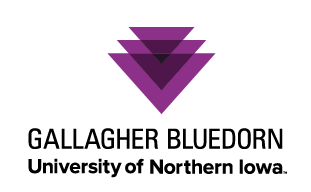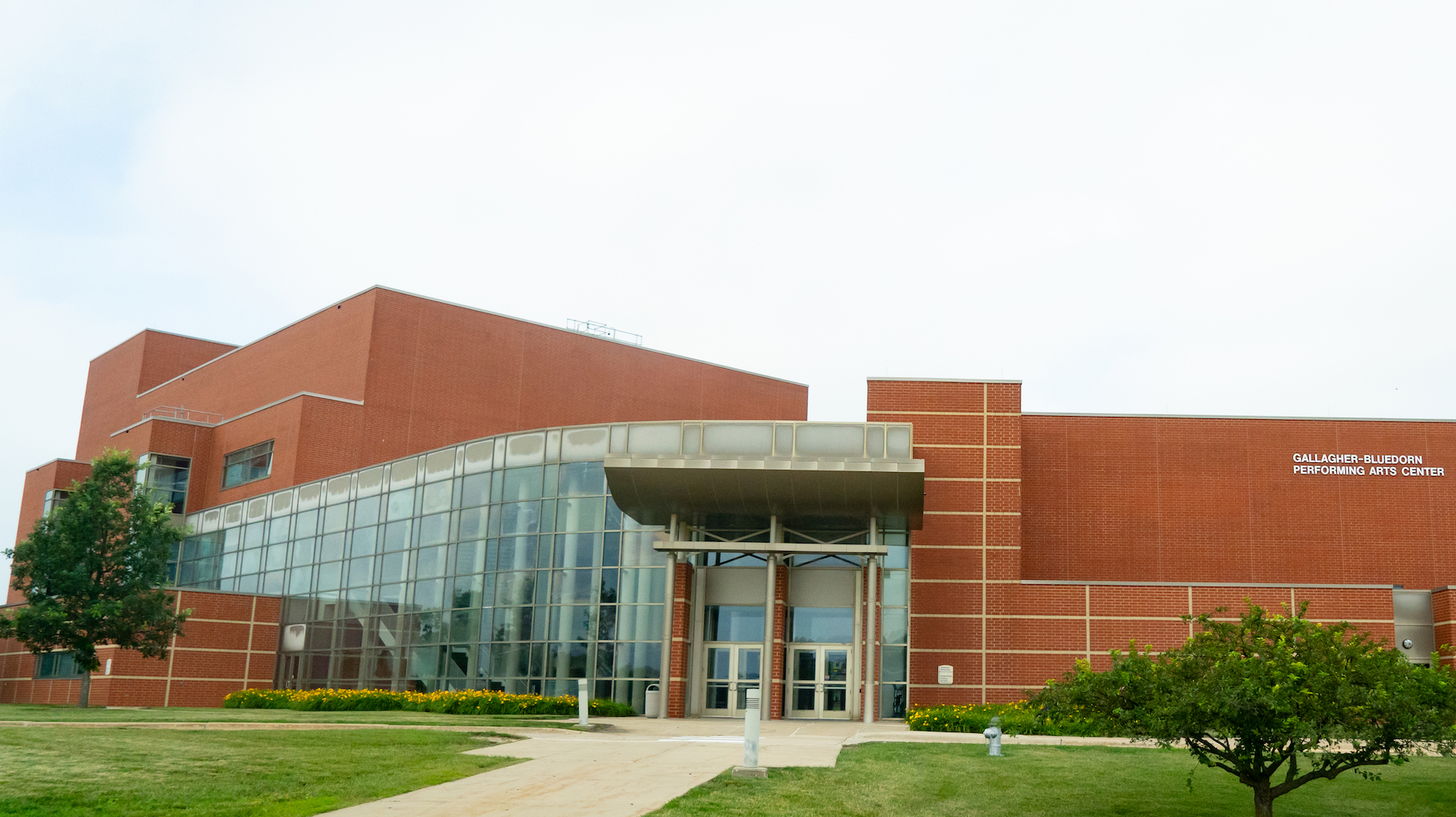Blog Post
How a Performing Arts Center Was Born
1944 to 1988
Need Acknowledged in 1944
Funding for a new arts center was anticipated as WWII was ending, resulting in the Iowa General Assembly including a performing arts center in proposed new building plans in 1944. Latham Hall (1949), Price Lab (1957), and the Student Health Center (1961) were all built on campus. But alas, no performing arts center. High inflation and lack of funding were the culprits.
First Committee
In the 1960’s, rumblings about building a performing arts center continued. An Ad Hoc Committee on Auditoria Needs chaired by Stan Woods came forth with a recommendation in 1968. Committee members included faculty and staff Harold Bernhard, Jean Bontz, James Coffin, Howard Jones, John Ketter, Myron Russell, Edward Thorne, James Witham, and architect Robert Porter. Pressure was on again, as evidenced by the classes of 1968 - 1971 who made a performing art center the focus of their class gifts.
As a result of that Ad Hoc Committee report, the UNI Foundation commissioned a fundraising feasibility study in 1970 to see if a performing arts center could spark sufficient interest as part of a capital campaign. The consultants determined that private fundraising could not alone provide sufficient monies for the project, but that it could possibly be done in conjunction with other funding sources. Thus, a performing arts center was named as the second phase of UNI’s first-ever major capital campaign. Unfortunately, other projects continued to be prioritized with the UNI-Dome (1975) completed using private donations and student funding and Strayer-Wood Theatre (1978) completed with state appropriated funds.
Persistence Matters
Some remember the Lecture-Concert Series, later titled the Artist Series (and later called UNI Civic Arts), directed by Howard Jones. If you ever attended a performance in Lang Hall, you are well aware of the lack of acoustics, space and seating which long-hindered the ability to attract larger artists. President Curris, who was the UNI president at the time the Gallagher Bluedorn was finally approved, said that it happened “largely due to the efforts of Howard Jones”. There is document upon document from Howard Jones over the years, indicating the importance of building a performing arts center and detailing what should be included. He simply never stopped advocating. Curris himself gave credit to Jones for his persistence. Almost everywhere I searched, Howard Jones’ name came up. No doubt he was exhausted by it too—kudos and thanks to him. Sometimes that’s what it takes.
Ron Ross (School of Music Director) took the same stance as Howard Jones and persisted in writing memos outlining the need to resume the pursuit of a new performing arts center. Ross’ interest was focused on having it near the School of Music to be a facility for students to utilize.

Community Committee Self-Forms
Sometimes it takes external nudging, too. A community committee self-formed in 1984 to discuss the need for a performing arts center in the community in conjunction with the need for a facility for the Waterloo-Cedar Falls Symphony Orchestra. Over the course of 2.5 years, they worked their way through several iterations of how such a facility could serve all needs. Research about a performing arts center was conducted by the University (paid for by the committee) and findings were used to inform their recommendations. The committee submitted a report to Curris in 1986 that the facility should be on the UNI campus with the primary users being UNI and the Waterloo-Cedar Falls Symphony Orchestra. The committee included Hovey Brom, Frank Cooper, David Greene, William Hinson, Howard Jones, LeRoy Redfearn, Renata Sack, Fordon Tjelmeland, Carl Bluedorn, President Curris, Donna Nelson, Joan Poe, and Wallace Sulentic. Jones served as secretary of the group and all proceedings were handled by chairperson Brom.
Hovey Brom, one of the original Friend of the Gallagher Bluedorn and an usher during the first years, shared the committee notes and final report with me. As we talked, it became apparent that it is quite possible the Gallagher Bluedorn might not have existed on this timeline, had this committee not initiated it. This community committee paved the way for the Waterloo-Cedar Falls Symphony to be housed at the future Gallagher Bluedorn and re-initiated the topic of private funding joining forces with state funding to benefit joint academic and community missions.
Formalizing the Planning
It seemed to be time to try again, so the next step was to formalize the campus planning process. In July 1988, President Curris formed the UNI Performing Arts Center Planning Committee: a group of campus and community members to take the project forward.
1989 to breaking ground
In 1989, talk remained on the UNI campus about the need to build an arts center. The UNI Foundation was considering embarking on a campus-wide capital campaign (you may remember the slogan that resulted, “Leading, Building, Sharing”) that might include building an arts center. A capital campaign generally has several projects under its umbrella, of which an arts center might be one. The Foundation commissioned another feasibility study regarding the potential fundraising capacity. The result was that the Foundation might be able to raise $11M with numerous partnerships, but it was unlikely that the $21M they were interested in for a campus-wide capital campaign would be possible. Challenge on!
The Quiet Phase
According to Bill Calhoun from the Foundation (later, Vice President of Advancement), it was determined that $2M of initial donations to an arts center was needed before it could be part of that capital campaign. Without at least that much, the public support would not be deemed solid enough to raise the total amount needed. Raising money before a capital campaign is publicly announced is called the quiet phase. It was started without even having drawings to show people.
Ed and Cathy Gallagher and Carl and Peggy Bluedorn committed first with many others following, of course. Both couples were stalwart in their feelings that an arts center with room for the symphony was essential to the Cedar Valley and they wanted to be sure it could happen.
In 1992, the cost to build the arts center was an estimated $14 million, with a goal of $9 million from private donations. By summer, the initial facility drawing was completed. The McElroy Trust committed $500,000. Early in 1993, the UNI-Civic Arts Association (which would eventually become Friends of the Gallagher Bluedorn) donated $100,000. Remember Howard Jones, who persisted about building an arts center throughout all the past years? UNI-Civic Arts was his baby.
By mid-1994, pre-campaign donations to the arts center reached $6.5 million of the $9 million goal. Vice President for Development Joe Mitchell said it was time to begin work towards planning and construction. President Curris appointed a UNI Performing Arts Center Building Advisory Committee made up of community members and other constituents. (See the grand-opening program page for lists of people involved.) By February 1994, $8.5M of donated funds had been raised for the arts center.
The UNI Foundation pledged an additional $3.8 million of its upcoming "Leading, Building, Sharing" capital campaign to the arts center. It was going to happen! Some had idealized hopes that the facility would be completed by 1996, which we now know, was unrealistic. But, it’s important to have goals.


Legislative Efforts
On the public side of the fund-raising effort, the Board of Regents made the arts center a top priority on its capital budget request for funding by the General Assembly in the 1995 legislative session. The Regents recommended that a total of $8.8M in state funds be made available for the project. Governor Branstad responded with support for $2M of that requested funding.
Finally, in March, after lobbying by students and several contingents of donors/supporters, a General Assembly House committee recommended support for the $2M state appropriation and the recommendation passed.
Community Effort and the Public Phase
The Gallagher Bluedorn was to consist of the School of Music, WCF Symphony and general performing arts space, and all groups needed to be involved in order for the project to be successful.
Professor Ron Ross, Director of the School of Music and persistent supporter of building an arts center was named Special Assistant to the President for the building project. The Foundation staff worked with a team of excellent volunteers and other people in multiple roles, to bring the Gallagher Bluedorn to fruition.
Dee Vandeventer, director of annual giving at the Foundation, worked with a community fundraising committee who each led small groups of 10 volunteers, in order for the campaign to have reach. The theme of the arts center fundraising was “That’s the Ticket”.
An important part of a campaign is showing internal support from the people who make up the organization; outsiders are more likely to donate when insiders do it first. Noreen Hermansen, director of alumni at the time, now with the Foundation, said that she and faculty members Myrna Boots and Lyle Schwartzenbach visited “every single UNI faculty and staff member work group in every nook and cranny of the campus”, including calling on third shift staff at their breaks in the middle of the night. They brought decorated UNI Bakery cookies and a plea to assist. It took them a year to get to everyone. Noreen told me that although some said they wouldn’t probably attend the arts center that often, they said they wanted it to exist for their grandchildren. Faculty and staff donated over $1M towards the capital campaign.
In the end, $35M was raised for the campus capital campaign. Additionally, according to Dee Vandeventer, donations to the annual fund tend to drop during a campaign (because people redirect their donations) but that didn’t happen this time. The community was jazzed and the arts center was a clear focal point of donations.
In 1996, the Regents made the remainder of the requested state funds, $7.1M, the top priority for new construction for fiscal year 1997. The building would be nearly 100,000 square feet. Great Hall seats would be staggered and the floor angled for better viewing (every seat is a good seat). The budget for the arts center would be about $19 million, with now, $10 million from private funds. That remaining funding request was approved. It was really going to happen!
Show and Tell
Groundbreaking took place in 1997 while fundraising was still happening. That’s faith, isn’t it? According to Bill Calhoun, that was possible because President Curris was THE driver. [When I interviewed Curris, true to form, he wouldn’t own any of it, saying that everyone else did the work.] They would tour people through the building during construction, talk about construction detail and the critical impact the center would have on arts in the Cedar Valley. Did you know that there is space between the Great Hall space and the School of Music space, such that they are essentially two buildings? That’s so the sound won’t pass between spaces and they can both be used at the same time. And that’s how the rest of the money was raised - through show and tell.
The Gallagher Bluedorn opened its doors in April 2000, marking a 12-year process from just this planning committee to completion.
It took 53 years to get from inspiration to groundbreaking. All because people who loved the arts had vision and persistence and kept picking up the torch from one another. You know some of these people. Thank them. And if you were one of those—we all thank you!
Blog post by Margaret Empie, Friend of the Gallagher Bluedorn Board Member
(1) UNI Special Collections with photos: https://scua.library.uni.edu/university-archives/building-histories/gall...




